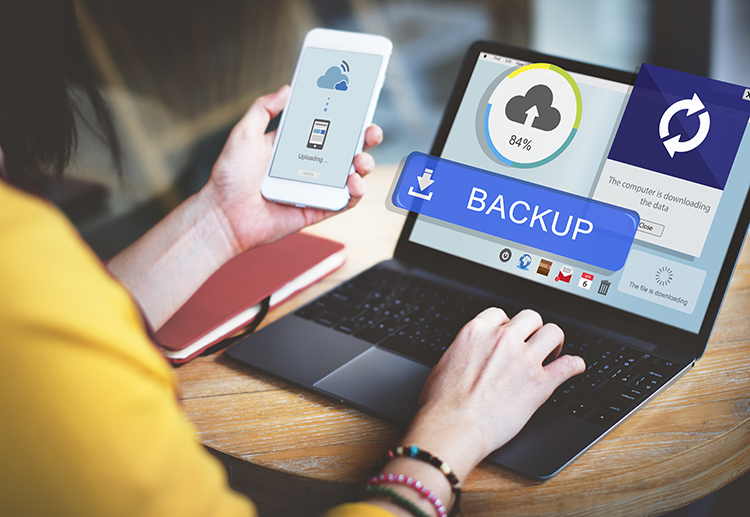Email security involves using different tools and tactics to help identify and filter out potential harms and attacks. Without protection, emails are essentially open and free for hackers and other malicious users to snoop and poke around in. While the best way to ensure email security is to enlist the help of a full stack security service, users can help improve their protection by following these email security tips.
Understand Cyber Crime
Cyber crime comes in many shapes and forms, ranging from harmless pranks to company bankrupting crime. BEC (business email compromise) attacks should be considered one of the biggest threats to businesses today. They have cause billions in company losses and continue to evolve and multiply at an alarming rate.
The first step in defense against cyber criminals, is a clear understanding of the various types of malware, ransomware, viruses, and phishing attacks. Each of these target a specific type of user and require different precautions to be taken to avoid infection.
Use a Strong Password
As far as email security tips go, password creation and security have always dominated the conversation, for good reason. The importance of a strong account password can not be understated when talking about email security. Passwords should always be over eight characters, include of mix of lowercase and capital letters and number, and never be easy to guess (i.e. town of birth, pet’s name, favorite band).
For further protection, users can implement a password management system, such as KeePass, or enable 2-factor verification.
For further protection, users can implement a password management system, such as KeePass, or enable 2-factor verification.
Control Who Has Your Email
Email addresses are used for almost everything on the web now, but that doesn’t mean user’s should just hand theirs over. The more public an email address is, the more likely it is to be targeted for an attack by hackers. User email addresses are also exposed to attacks through the email lists that are collected and compiled by companies and businesses. This leaves the security of the user’s email address to the company, which may or may not be completely secure.
Protect Your Sent Emails
The path email takes when sent, is not direct, the email will go through 3rd party servers on it’s way to it’s destination. Anyone along this route is able to look at or edit the original email without the sender’s knowledge and can lead to serious data and information breaches.
To protect against unwanted snoopers, users can use a range of tactics and email security tips. One of the most applied method is the enabling of TLS encryption. TLS adds an additional layer of protection to email and stops hackers from being able to read the content of the email. If TLS can not be enabled, or the destination server doesn’t have TLS enabled, emails will continue to be unsecured and the user should be cautious.
In general, user’s should protect their email attachments with passwords or by placing them in a zip file. This ensures the user’s files can not be tampered with or infected on the path to it’s destination regardless of if TLS is enabled.
Enlist an Email Security Service
Email security is nothing to take lightly, especially when the number and sophistication of these cyber attacks are increasing. Email security companies use filters and other tools to help sift through email looking for spam and potential attacks.
The biggest advantage of enlisting an email security solution is the ability to combat both known and unknown attacks. Security software, such as antivirus, use data from previous versions attack to identify and defend against it; they can not identify or stop new attacks.
The biggest advantage of enlisting an email security solution is the ability to combat both known and unknown attacks. Security software, such as antivirus, use data from previous versions attack to identify and defend against it; they can not identify or stop new attacks.
Know What Your Opening
The majority of cyber attacks happen through email as it is the easiest way onto a user’s computer. Proper education and training should be completed by anyone who interacts with email on a regular basis. Hacker tactics are getting more advanced and authentic looking by the moment, so user’s should always be aware of how to detect a malicious email and what to do if they receive one/open one by accident.
Be Wary of Public Connections
One of the lesser known email security tips is to avoid the use of public devices and connections. Public computers and hot spots can be tempting for those users on-the-go, but their unsecured nature makes them a hotbed for cyber attacks.
When a user logs onto a public computer they are completely unaware of who and what has been on that device in the past. While the machine may appear normal to a user, there could be unsavory programs installed such as keyboard logger, waiting to collect credentials.
When a user logs onto a public computer they are completely unaware of who and what has been on that device in the past. While the machine may appear normal to a user, there could be unsavory programs installed such as keyboard logger, waiting to collect credentials.
Hackers use public hot spots as a way to lure in unaware victims, once connected, these victim’s computers become completely accessible. Once they have access, the hacker can view the computer’s information, lead the user to phishing sites, or trick them into downloading malware or ransomware.
The best way to stay safe in public is to avoid open connections and shared computers.
Restrict What You Put Online
Social media is one of a cyber criminals favorite hacking tools. Hackers research social media accounts get vital personal information directly from profiles and self written bios. This information helps hackers to bypass the account security questions like “what is your mother’s maiden name,” used by official institutions, banks, and government agencies.
It may be impossible to protect all personal information while online, but users should still be careful about what information they share.
It may be impossible to protect all personal information while online, but users should still be careful about what information they share.
Back Up Your Information Regularly
One of the greatest email security tips a user can receive is to frequently back up their data.
Ransomware attacks are becoming more and more popular, mostly due to the high ROI the attack awards the hacker. Once installed, these attacks start by scanning through the user’s computer, selecting files and encoding them. When encryption is complete, the user is notified that their files are being held for ransom and the user must pay a fee to get the key.
Ransomware attacks are becoming more and more popular, mostly due to the high ROI the attack awards the hacker. Once installed, these attacks start by scanning through the user’s computer, selecting files and encoding them. When encryption is complete, the user is notified that their files are being held for ransom and the user must pay a fee to get the key.
This type of attack can be severely detrimental to a user, leaving them with nothing more than shell of a computer. After the files are encoded, user’s are left with an option to pay the ransom or to lose all their data, which may not be possibility for a user/company.
Backing up information on a consistent basis is the best and easiest way to protect oneself from a ransomware attack. Since the user will already have a backed up version of their information, there will be no need to stress over the encryption or pay the ransom.
Stay Safe on Mobile
Although not publicised as much as desktops, mobile phones can and do, still get attacked. A user’s phone is not only vulnerable through email and phishing sites, user’s must also be wary of the apps they are downloading. While Android devices are more likely to be attacked, iPhone users should also be cautious to ensure safety. Be sure not to visit any potentially dangerous sites or download any unknown attachments with out putting in place other security strategies.






